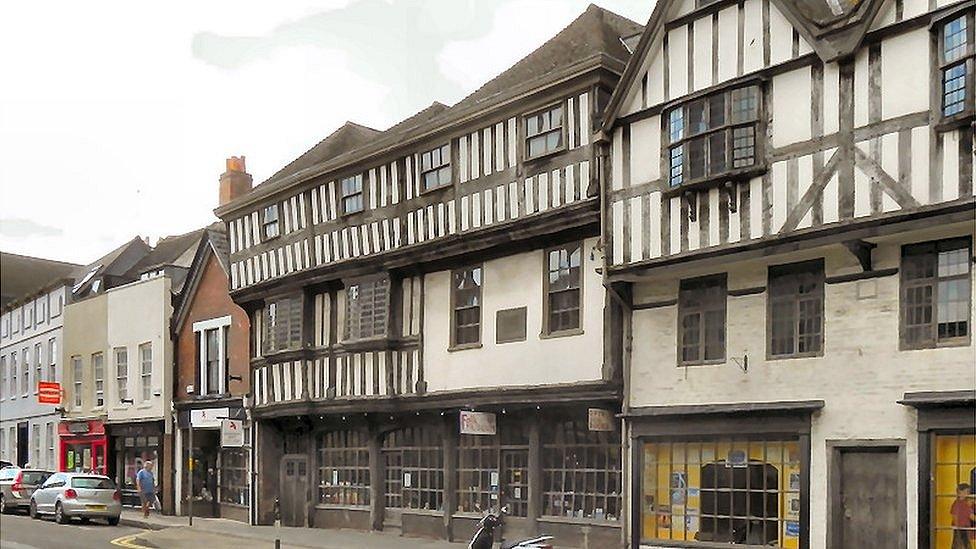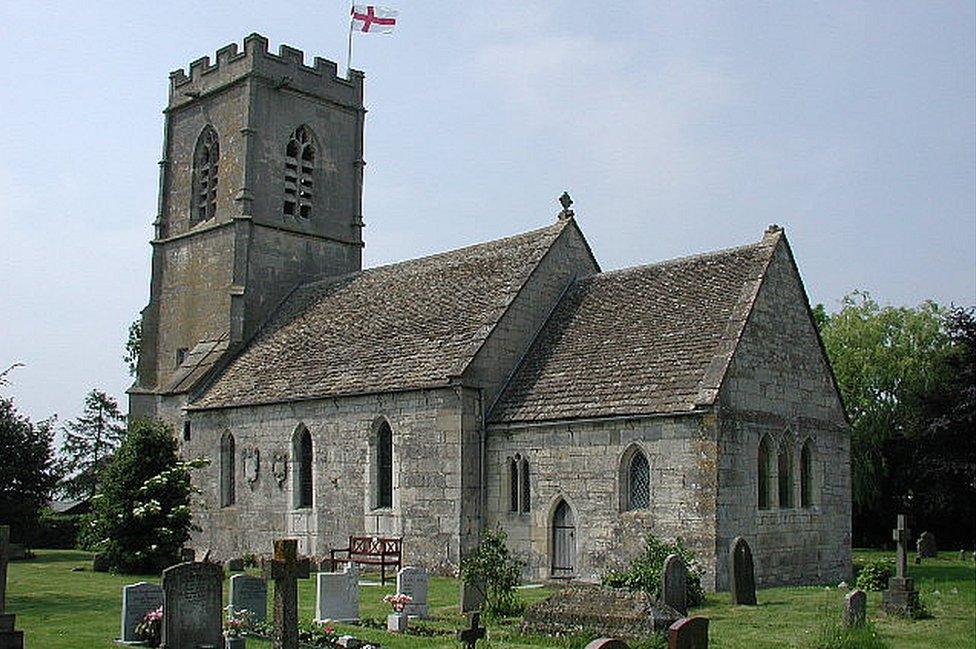Gloucestershire buildings 'may be older than records show'
- Published

The front range of the Folk Museum in Gloucester has been tree-ring dated to 1509
Some timber-framed buildings might be older than thought, historians have said.
Gloucestershire's Building Recording Group said the city of Gloucester was home to many such structures that were unrecognised.
The group now wants to precisely date more than 36 buildings in the county by using tree-ring dating.
Researchers said structures could often be older than official records showed because they were inspected externally.
The group's chairman Dr Andy Moir, said he moved to Gloucester five years ago, and "didn't know there were any timber-framed buildings here at all".
"Herefordshire and Shropshire are well known for their timber-framed tours, but it's very under the radar [in Gloucester].
"But if you walk up and down the high street they're everywhere.
"We're trying to put timber-framed buildings on the map. We're trying to highlight the heritage that is surviving in Gloucester because it is unique."
Exact date
Dr Moir added taking "pencil-like cores" from oak timbers could help them work out the age of the buildings.
"We can date the unique series of tree rings and identify the exact year that the trees were felled," he said.
"Because trees were normally converted into timbers without seasoning, these tree ring dates typically identify the year a building was constructed."

The nave roof of St Margaret's Church, Whaddon has been dated to 1422
The project aims to date some prominent buildings in Gloucester, Tewkesbury and Newent to understand more about them.
"We are asking everyone to look in their roofs," Dr Moir added.
"If you find smoke-blackened timbers the building is likely to have been built before 1540.
"If you find an oak 'A' frame that extends from the roof down into the walls [called a cruck] the building could have been built before 1400, or even earlier."
The project has been given £38,000 from the National Lottery Heritage Fund.